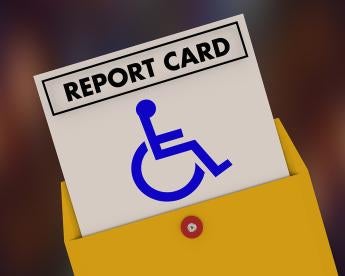On December 5, 2022, the Department of Health and Human Services (“HHS”), Office of Inspector General (“OIG”), released their Semiannual Report to Congress for the period beginning on April 1, 2022, and ending on September 30, 2022 (the “Semiannual Report”).[1]
The Semiannual Report details the efforts made by the OIG in supporting HHS programs throughout the reporting period in “identifying significant risks, problems, abuses, deficiencies, remedies, and investigative outcomes relating to the administration of HHS programs and operations.”
The Semiannual Report states that the OIG’s work lead to a whopping $1.29 billion in expected recoveries from investigations during this reporting period, and the OIG expects to receive nearly $4 billion in total recoveries resulting from HHS-OIG audits and investigations during the trailing twelve month period leading up to the release of the Semiannual Report.
In addition, the Semiannual Report included a summary chart of OIG reports issued, expected recoveries, and criminal and civil actions, which is copied below in comparison to the same numbers from the parallel period in 2021:[2]
| Statistic | FY 2021 (10/1/2020 – 9/30/2021) | FY 2022 (10/1/2021 – 9/30/2022) |
| Audit Reports Issued | 162 | 114 |
| Evaluations Issued | 46 | 43 |
| Expected Audit Recoveries | $787.29 million | $1.19 billion |
| Questioned Costs | $1.17 billion | $2.17 billion |
| Potential Savings | $1.24 billion | $279.09 million |
| New Audit and Evaluation Recommendations | 506 | 445 |
| Recommendations Implemented by HHS OpDivs | 432 | 424 |
| Expected Investigative Recoveries | $3.00 billion | $2.73 billion |
| Criminal Actions | 532 | 710 |
| Civil Actions | 689 | 736 |
| Exclusions | 1,689 | 2,332 |
As illustrated in the table above, the number of audit reports and evaluations issued decreased (from 162 and 46 to 114 and 43, respectively) from this time one year ago, but the OIG has been significantly more active on the enforcement side – instituting many more criminal and civil actions and excluding many more individuals and entities from participation in HHS programs.
While it may seem like the OIG has been more active of late, that might be the result of a short-term memory, as the enforcement numbers in this most recent fiscal year are closer to, or even less than, those from Semiannual Reports pre-dating the pandemic. The numbers in the last three categories highlighted in the last paragraph more closely align with the yearly numbers presented for fiscal years 2019 and 2020, which might indicate that the COVID-19 pandemic prevented or delayed OIG representatives from handing out penalties.
In each Semiannual Report, the OIG highlights issues that they consider the most significant and high-risk in the healthcare industry for the current environment. These issues give us a sneak peak into what the OIG is and will be focusing on in the coming months. This Semiannual Report hones in on the following issues, and more:
-
Responding to the COVID-19 Pandemic and Other Emergencies –
-
As the COVID-19 pandemic persists, the OIG remains focused on promoting HHS’s COVID-19 response and recovery through its four stated goals: (1) protect people; (2) protect funds; (3) protect infrastructure; and (4) promote the effectiveness of HHS programs, now and into the future. The Semiannual Report also highlights the OIG’s enforcement actions against certain bad actors interfering with COVID-19 testing and prevention[3] or providing vaccinations for falsely-characterized individuals ineligible to participate in programs designed to vaccinate long-term care facility residents and staff during vaccine rollout.[4]
-
-
Leveraging Oversight to Better Protect Nursing Homes –
-
In the introduction to this Semiannual Report, Grimm indicated that “providing quality and safety of care in the more than 15,000 Medicare- and Medicaid-certified nursing homes nationwide” is a “top priority” moving forward. The Semiannual Report indicates that there are 21 ongoing audits and evaluations focusing on nursing homes, and the OIG is determined to more deeply understand factors contributing to poor nursing home experiences.
-
-
Ensuring Health and Safety of Vulnerable People Served by HHS –
-
During this reporting period, the OIG focused extensive efforts on protecting those vulnerable classes – including the elderly, children, and adults with developmental disabilities – served by HHS programs. The Semiannual Report highlights that the HHS, through a referral from the OIG, was able to debar numerous individuals and entities during this reporting period for criminal convictions, including those debarred after defrauding child care programs partially-funded by the Child Care and Development Fund through submitting claims for children who did not attend day care programs.
-
-
Preventing and Treating Opioid Misuse –
-
The opioid crisis has been, and continues to be, a priority for OIG. In September of 2022, the OIG released a data brief supported by OIG investigative efforts detailing the prevalence of opioid overdoses for Medicare Part D beneficiaries.[5] According to that data brief, more than 1 million Medicare beneficiaries were diagnosed with an opioid use disorder in 2021, but fewer than one-fifth of those beneficiaries received medication to treat their use disorder.
-
-
Ensuring Equitable Access to High-Quality Care in Departmental Programs –
-
“Health equity” has been a hot topic in this reporting period, as players in all sectors of the healthcare industry seek to promote equitable access to quality care for all persons. The OIG conducted significant work during this reporting period related to access to quality care and the correlation between social determinants of health and quality care. Notably, the OIG found in a September 2022 data brief that certain sectors of the population, in this case, beneficiaries in urban areas, Hispanic beneficiaries, and female beneficiaries were more likely than other groups to use telehealth services.[6]
-
As always, we will continue to monitor OIG enforcement actions and advisory opinions, particularly those focused on the sectors above, in order to stay current on best practices and problem areas in the healthcare industry. As we exit the pandemic and the OIG returns to full force, we expect more enforcement action especially in areas where activity was put under the spotlight as a result of the pandemic, including nursing homes and telehealth.
FOOTNOTES
[1] See Semiannual Report (hhs.gov).
[2] See Semiannual Report to Congress—April 1, 2021, Through September 30, 2021 (hhs.gov).



 i
i


